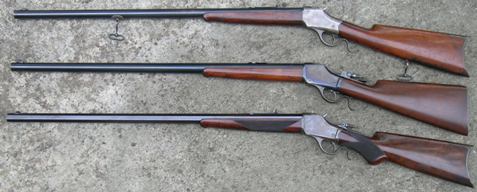Bert H. said
Interesting, and it at least partially explains why I have not yet encountered a Lyman tang sight with the “WM” application code. It appears that the “SC” was/is the more likely found sight on a Winder Musket, but even they are scarce. Until this topic post, I had only ever seen just one (and I own it).
One of the main reasons for making the musket was to provide shooters using it with a military type rear sight; adding a tang sight would defeat that purpose, though it’s a better sight. Not so, however, with the excellent rcvr. sights on 87s–replacing one of them with a tang sight would make no sense at all.
clarence said
One of the main reasons for making the musket was to provide shooters using it with a military type rear sight; adding a tang sight would defeat that purpose, though it’s a better sight. Not so, however, with the excellent rcvr. sights on 87s–replacing one of them with a tang sight would make no sense at all.
I agree… the Lyman No. 53 receiver sight is more than adequate for the Model 87, and it would require removing it to use the “SC” Lyman tang sight, leaving behind (4) ugly empty screw holes in the side of the receiver. I have looked at more than 1,500 Model 87 Winder Muskets, and every single one of them had a Lyman No. 53 sight (or was drilled & tapped for it).
WACA Historian & Board of Director Member #6571L

1 Guest(s)


 Log In
Log In Members
Members Home
Home

 Add Reply
Add Reply Add Topic
Add Topic
 Offline
Offline




